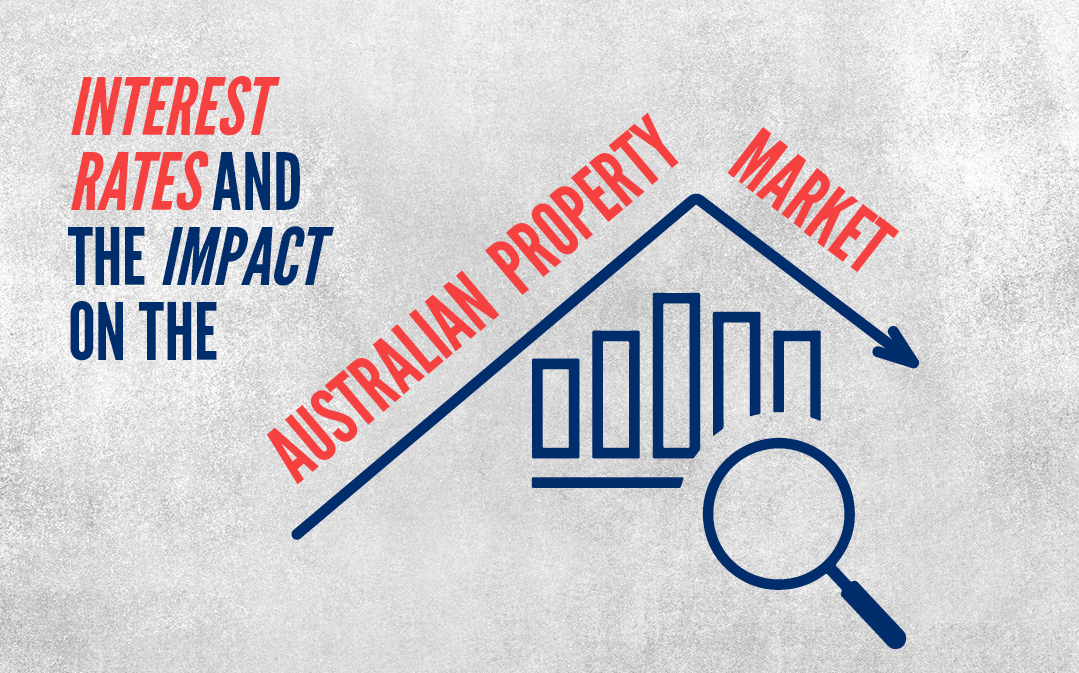Interest rates vs Australian property market
It’s not much of a stretch to conclude that if you’re reading this post, you’re a switched-on property investor, or on the way to becoming one. And you’ll no doubt be aware that the Reserve Bank of Australia (RBA) has just delivered its 12th rate hike since May last year, leaving many homeowners reeling. It’s estimated that the average Aussie borrower is now paying an additional $15,000 per year on their mortgage compared to 13 months ago. And some analysts predict that further interest hikes could continue in the coming months unless there’s a major downturn in inflation.
In this article, we’ll explore what the soaring interest rates means for the current Australian Property Market and what opportunities it may present. To do this, we’ll compare this time with challenges the market’s faced in the past.
Attending our free Capital Properties Discovery Session can help you discover when’s the best time for you to invest in the property market. We can make sure you’re ready so you can avoid any pitfalls, and help you take advantage of the opportunities that are out there.
On the go? Here’s 30 seconds of take outs:
- The RBA has just delivered its 12th rate hike since May 2022.
- Typical borrowers are paying $15,000 yearly more than 13 months ago.
- Do you see ‘opportunity is nowhere’? Or ‘opportunity is now here’?
- The 1991 recession caused multiple bankruptcies and soaring unemployment.
- The 2008 GFC saw property prices fall initially, but a quick recovery due to government stimulus packages.
- COVID-19 in 2020 saw growth in ‘lifestyle’ markets but the subsequent inflation caused current interest rate rises.
- There are opportunities with migration, ongoing demand for rental properties, inter-state travel & lifestyle drivers.
Keep reading >>
The difference is perspective
In our March 2020 blog post ‘OPPORTUNITYISNOWHERE’ we talked about how the COVID-19 pandemic saw an unprecedented economic down turn and how that immediately affected the Australian property market. The strong start in the first few months of 2020 didn’t last long, with sales falling dramatically, making many investors nervous. In that blog post we also said that it’s “important to remember is that this phase will pass, and we will eventually get through to the other side”.
While some investors sat and waited for the storm to pass, there were others, Capital Properties included, that had a different perspective. It would have been easy to join the crowds predicting disaster, but instead we saw the potential in the great interstate migrate and the big shift towards the ideal Australian lifestyle. As we’ve said before: “Some people will see ‘opportunity is nowhere’, others will see ‘opportunity is now here. The difference is perspective.”
Current market compared with previous downturns
st as we did in the previous ‘OPPORTUNITYISNOWHERE’ post, we’ll compare this current slump to previous downturns. Because it’s a timely reminder to keep the big picture in mind as we assess the outlook for the property market for the rest of this year and apply the lessons we’ve learned that have helped us navigate these tricky markets before.
1991 RECESSION
1991 recession drivers:
Inflation is the rise in overall prices of goods and services over time. We explain inflation in greater detail in this blog post (click here). The common effects of inflation are:
- Rising prices reducing the purchasing power of some consumers (usually low-income earners), distorting purchasing power of others (high-income earners) to encourage spending, causing more inflation.
- The cost of borrowing increases for new loans, but people with existing loans have the benefit of repaying these with inflated money.
Initial reduced unemployment turned to prolonged acceptance of higher inflation that sets off an spiral of price hikes and demand for pay increases, leading to increased unemployment.
An account deficit happens when a country sends more money overseas than it receives from abroad. The largest component of an account deficit is usually a trade deficit, which means that a country buys more than it sells. If an account deficit remains on the books for a long time, it can mean future generations will be burdened with high debt levels and large interest payments.
1991 recession effects:
- Many businesses went bankrupt and some of the major banks almost went under.
- Unemployment rose from 5.8% to 11.2%
2008 GLOBAL FINANCIAL CRISIS
The global financial crisis (GFC) came about because of relaxed lending standards by the banks, which ultimately resulted in many US and European banks dissolve into bankruptcy. Predictably, this caused the stock market to crash, and people could no longer access finance. This led to the greatest economic downturn in the US history since the 1930’s Great Depression. And ultimately the fallout created a global economic meltdown.
‘But you can’t borrow your way to a good time forever, and this recent example of a credit-fuelled boom was no exception’ – Luci Ellis. Head of Financial Stability Department. Reserve Bank of Australia.
2008 global financial crisis drivers:
- Human psychology: When times are good, perceptions of risk diminish.
- Lending standards eased.
- High loan-to-value ratio loans.
- Lo doc loans common.
- High household debt.
2008 global financial crisis effects:
- All capital cities in Australia saw property prices fall but the government created relief measures including First Home Buyer stimulus’ (aka the 5% deposit scheme).
- As the stimulus took effect, housing prices recovered, so it was a very short sharp downturn in the housing market and the recovery in Australia was quite rapid.
2020 COVID-19 PANDEMIC IN AUSTRALIA
The world hadn’t seen a pandemic like COVID-19 since the 1918 – 1920 Spanish flu. Although the World Health Organisation tried to guide us through it, each country, and in Australia’s case, each State and Territory, handled the pandemic differently. Overseas migration stopped abruptly, so population growth was dramatically reduced. That meant less demand for houses, and particularly rental properties.
2020 COVID-19 pandemic outcome:
- Government enforced travel restrictions, internationally, nationally and locally.
- Burden on public services, e.g. healthcare, police.
- Public health measures = closure of building sites, reduced labour, no house opens, material shortages etc.
2020 COVID-19 pandemic effects:
- Government stimulus packages including the Job Keeper subsidy and rental assistance package helped initial confidence.
- Unprecedented early growth in ‘lifestyle’ markets (driven by work from home) gave way to post-pandemic declining property values.
- The recovery effort to reduce inflation has resulted in current interest rate rises.
OPPORTUNITYISNOWHERE
It’s not surprising that some property investors are stalling and more seem to be bailing. Although the reason for recent increased investor sales isn’t clear, it’s assumed some are due to the increased interest burden, though another driver is certainly capital growth in some still-strong markets.
Although (somewhat unbelievably) further rate hikes are still a possibility, there are still opportunities to be found.
- Migration: We’re on track for a huge migration boom with more than 400,000 new immigrants expected to arrive in 2023.
- Current and future strong demand for rental properties.
- Inter-state travel & lifestyle drivers.
- Capital gains in high growth areas.
The Capital Properties team have the experience and expertise to help you take advantage of opportunities in the property market. Book a FREE Discovery Session to learn how a strategic approach to property investment can help you create a secure and successful financial future.






